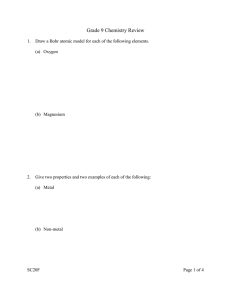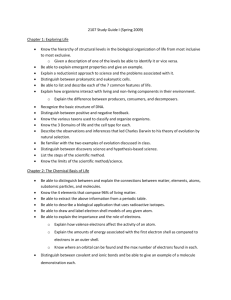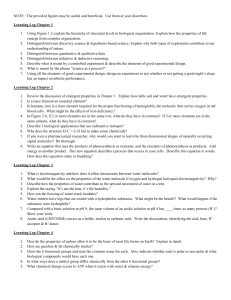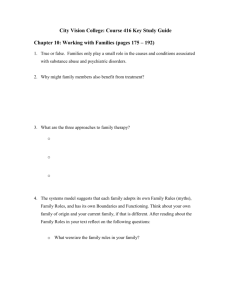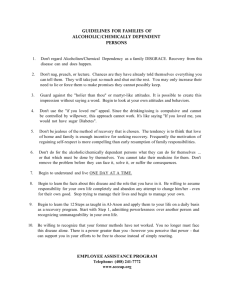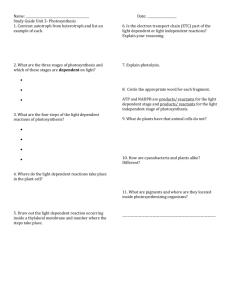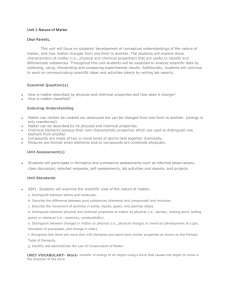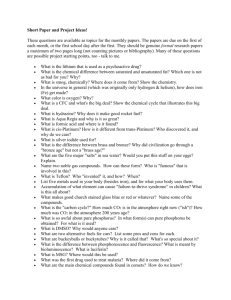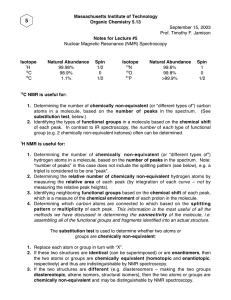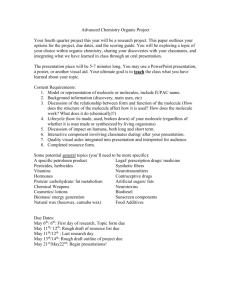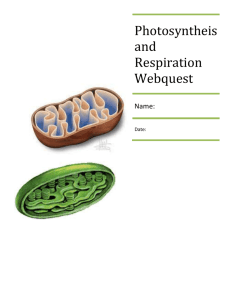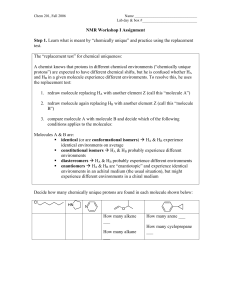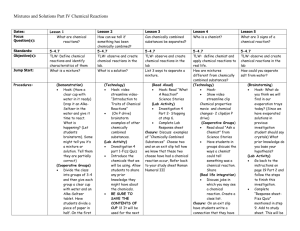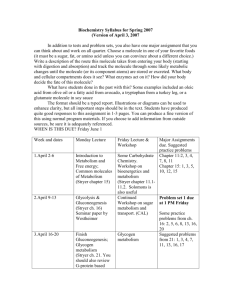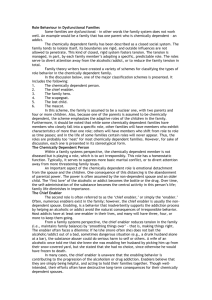NOTE: The provided figures may be useful and beneficial. Use them
advertisement
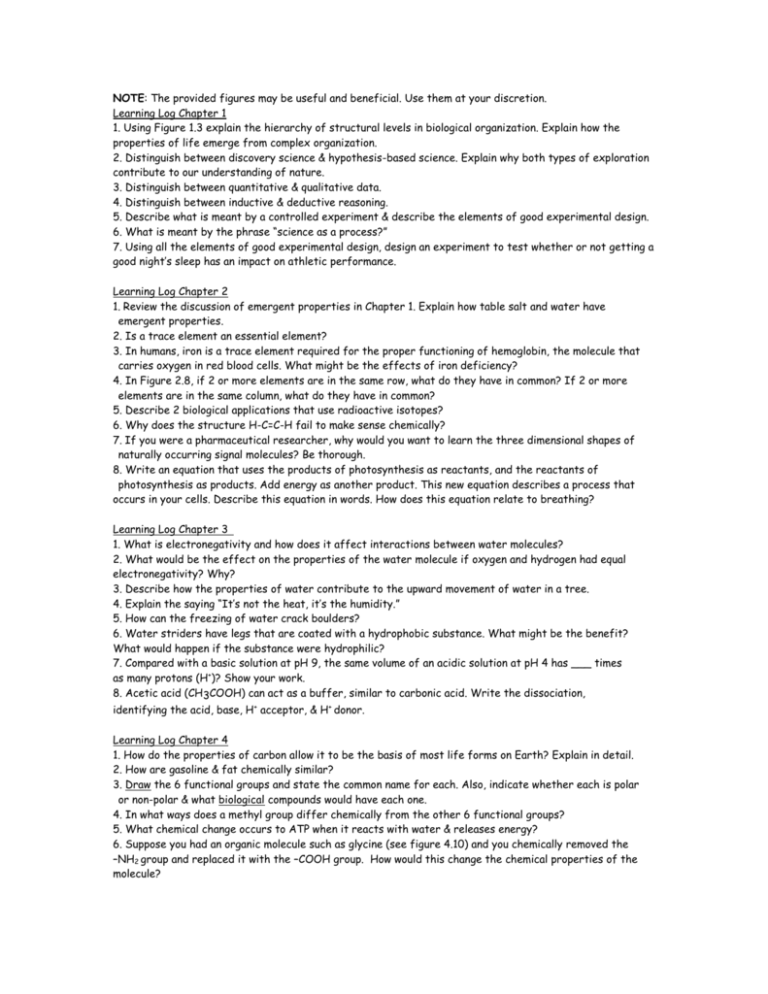
NOTE: The provided figures may be useful and beneficial. Use them at your discretion. Learning Log Chapter 1 1. Using Figure 1.3 explain the hierarchy of structural levels in biological organization. Explain how the properties of life emerge from complex organization. 2. Distinguish between discovery science & hypothesis-based science. Explain why both types of exploration contribute to our understanding of nature. 3. Distinguish between quantitative & qualitative data. 4. Distinguish between inductive & deductive reasoning. 5. Describe what is meant by a controlled experiment & describe the elements of good experimental design. 6. What is meant by the phrase “science as a process?” 7. Using all the elements of good experimental design, design an experiment to test whether or not getting a good night’s sleep has an impact on athletic performance. Learning Log Chapter 2 1. Review the discussion of emergent properties in Chapter 1. Explain how table salt and water have emergent properties. 2. Is a trace element an essential element? 3. In humans, iron is a trace element required for the proper functioning of hemoglobin, the molecule that carries oxygen in red blood cells. What might be the effects of iron deficiency? 4. In Figure 2.8, if 2 or more elements are in the same row, what do they have in common? If 2 or more elements are in the same column, what do they have in common? 5. Describe 2 biological applications that use radioactive isotopes? 6. Why does the structure H-C=C-H fail to make sense chemically? 7. If you were a pharmaceutical researcher, why would you want to learn the three dimensional shapes of naturally occurring signal molecules? Be thorough. 8. Write an equation that uses the products of photosynthesis as reactants, and the reactants of photosynthesis as products. Add energy as another product. This new equation describes a process that occurs in your cells. Describe this equation in words. How does this equation relate to breathing? Learning Log Chapter 3 1. What is electronegativity and how does it affect interactions between water molecules? 2. What would be the effect on the properties of the water molecule if oxygen and hydrogen had equal electronegativity? Why? 3. Describe how the properties of water contribute to the upward movement of water in a tree. 4. Explain the saying “It’s not the heat, it’s the humidity.” 5. How can the freezing of water crack boulders? 6. Water striders have legs that are coated with a hydrophobic substance. What might be the benefit? What would happen if the substance were hydrophilic? 7. Compared with a basic solution at pH 9, the same volume of an acidic solution at pH 4 has ___ times as many protons (H+)? Show your work. 8. Acetic acid (CH3COOH) can act as a buffer, similar to carbonic acid. Write the dissociation, identifying the acid, base, H+ acceptor, & H+ donor. Learning Log Chapter 4 1. How do the properties of carbon allow it to be the basis of most life forms on Earth? Explain in detail. 2. How are gasoline & fat chemically similar? 3. Draw the 6 functional groups and state the common name for each. Also, indicate whether each is polar or non-polar & what biological compounds would have each one. 4. In what ways does a methyl group differ chemically from the other 6 functional groups? 5. What chemical change occurs to ATP when it reacts with water & releases energy? 6. Suppose you had an organic molecule such as glycine (see figure 4.10) and you chemically removed the –NH2 group and replaced it with the –COOH group. How would this change the chemical properties of the molecule?
